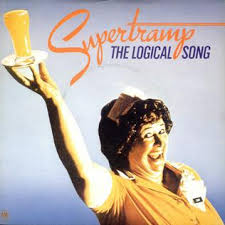
In some ways this is true. On foreign policy I’m an internationalist who believes in peace. On social policy I believe people should be free to love who and what they want, and to kill themselves in any way that suits them.
This is not true in economic policy. I still consider myself a liberal here, but business was always a liberal force before the Nixon era. Progress is a business word, still often used in advertisements to denote the aims of oil companies and manufacturers, as well as tech outfits.
My economic beliefs are based on those of Adam Smith, who saw wealth inclining the wealthy toward the common good. I consider Trump and his acolytes to be Nietzscheites. (Ayn Rand is just Nietzsche in a skirt.)
More to the point, I consider them Fascists, and resent that I can’t use the word in public without being condemned.
So, when it comes to the subject of net neutrality, I’m sure you’re thinking, Dana is going to tell us that the FCC is wrong, that Democrats are right.
I’m not.

Back in 2009, net neutrality made sense. Technically, it still does. Practically, not so much.
Back in 2009 a broadband line was 4 mbps, and it took 10 mbps to run a TV signal. Phones and tablets that downloaded a lot of video content were “hoarders,” as I wrote in 2006. The companies that paid dividends, and demanded monopoly rents before upgrading their networks, were trying to ration a scarce resource.
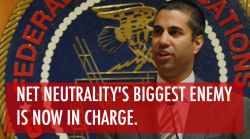
It’s true there is no “Moore’s Law of Software.” Software is still hand-made. The tools get better, but you still need programmers. The important point is that the benefits of new software, and new software techniques, can be exponential once applied. Look at what cloud has done for Adobe. Look what it has done for Nvidia.
Advocates of net neutrality have two reasons for wanting the Bells reined-in. One is a fear that they will demand monopoly rents from Web sites. The other is that they will destroy start-ups in the process.

If AT&T, or Comcast, were to go after the Web and say, “nice little web site you got there, too bad if something happened to it,” the Cloud Czars would shut that down. They opposed the end of net neutrality. They still do. For reasons of self-interest. Investing ahead of demand works. Supporting startups works. Demanding monopoly rents doesn’t. The Cloud Czars aren’t going to put their business models at risk for Trump, for AT&T, for the FCC, for anyone. And they can now defend themselves.
We already know how this is going to go, because we’re seeing it in wireless, which was always excepted from the net neutrality rules. There the name of the game is “zero rating.” Get your phone at Metro PCS and watch Amazon movies free. Get it at T-Mobile and watch Netflix free. Get it at AT&T and watch DirecTv Now free. No charge for the bits.
Here’s something that isn’t even mentioned in all the net neutrality brouhaha. The Obama Administration sold off the people’s broadcast frequencies in their last auction. T-Mobile bought, with both hands. TV’s low wavelength bands take power to push out, but they go for miles. In contrast, the microwave bands used for current telephony take tiny amounts of power to push out, but attenuate quickly. Low power WiFi goes maybe 100 feet. Higher power cell towers are pushing out their signals for just a few miles in any direction.
Nationwide coverage comes from sectorization. Signals are passed from tower to tower. This works for WiFi as well. This is what Comcast is using for their Xfinity WiFi offering.
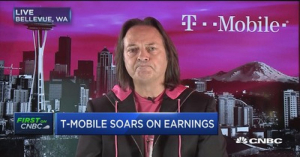
Here’s what happens next. Cable as we know it blows up. Right now, AT&T and Comcast are using most of the bandwidth in their last-mile wires for cable TV. They divide the capacity into 6 MHz channels, and let customers use just a sideband for Internet service.
But to compete with T-Mobile, it will be in their best interest to cut back on the number of channels they send, and devote more of their capacity to Internet service. You might pay $100 per month for Internet service, but it will be much, much faster than you have now. (Competition from 5G wireless will hold the price down.) You’ll lose that $150/month cable bill, and can invest that money in the streams, or over the top services, of your choice. Instead of sending a firehose of crap down their lines, the carriers will be sending streams, on demand. This will be a more efficient, and profitable, use of their capital. Verizon and AT&T have been buying content with both hands because they’ll get both the streaming revenue and the bit revenue.
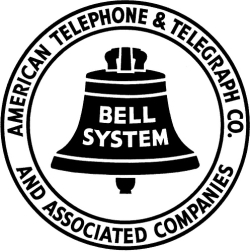
This transformation of the video business has been widely anticipated. It would be happening with or without net neutrality.
Now, what if the people at AT&T, Comcast and Verizon are as venal as their detractors believe? What if they do try to charge web sites for carriage? Well, if they get the people even angrier at them than they are now, the next election is less than 12 months away. Net neutrality will already be on the ballot. You think they want to make the wave worse? And 2020 is just 2 years past that. A Democratic President, elected on a net neutrality platform, will reverse the recent decision faster than you can say Ajit Pai.
Here’s the bottom line. The opposition to net neutrality is political. It has nothing to do with economic or technological reality. It’s a nice talking point, like Trump’s promise to defend fossil fuels.
That’s all it is, a talking point.


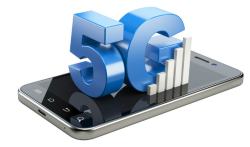








What an insult to Nietzsche!
What an insult to Nietzsche!